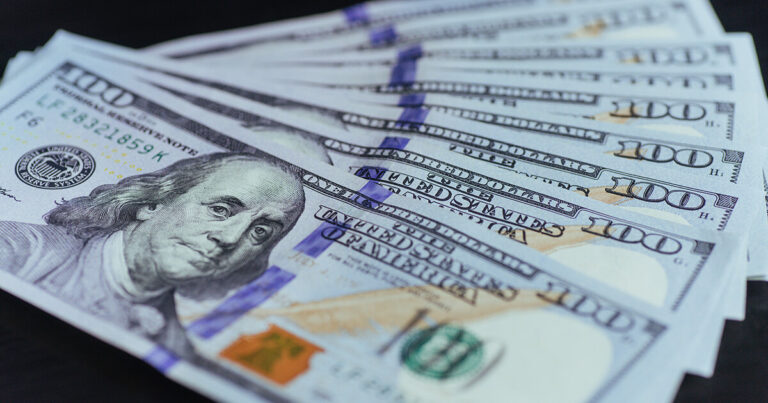
During this week’s international currency market news, safe-haven assets outperformed risk-on assets as concerns about the recent outbreak of the coronavirus delta variant and their economic impact continued to be a dominant market theme.
But among the haven currencies, this driving theme helped the Japanese to take the top spot as market sentiments turned positive on Friday. As expected in a typical negative forex sentiment, the yen took the top spot, followed by the Swiss franc and American dollar.
However, the American dollar closed the week in the red. In the meantime, riskier assets fell to the bottom, with the Canadian dollar heavily affected by falling international oil prices.
The Fundamentals Driving Currency Market News

Coronavirus Delta Variant
According to the WHO’s chief scientist, the delta variant continues to drive COVID 19 infections higher across most regions, a clear sign that the viral disease is not going away anytime soon.
While vaccination rates in the developed world have reduced severe cases and hospitalizations, other parts of the earth face health challenges – poor vaccine distribution, vaccine hesitancy, oxygen shortages, increased mortality, and overstretched hospital beds.
And due to delta variant concerns, Japan’s Olympics will be held without spectators, and the country declared a state of emergency.
Latest Crude Oil Price Forecast
This week, crude oil closed at less than $75 per barrel, down 0.77 % from the previous week. Delta coronavirus variant concerns weighed heavily on the latest crude oil price forecast.
However, it gained strength on reduced US oil stock, dimming hopes of Iran resuming production, and improved the global economic recovery process.
Economic Data
G7 members released economic updates, but they were not enough to counteract the impact of the Coronavirus delta variant. As the world economic activities continue to pick up, the delta variant heavily impacted the g7 nations’ financial performance.
G7 Economic Review And Performance
Summary: G7 Performance Summary
|
Currency pair |
5th July 2021 |
11th July 2021 |
Average exchange rate |
Percentage change |
Remarks |
|
USD |
92.413 |
92.116 |
92.425 |
0.321 |
drop |
|
GBPUSD |
1.3845 |
1.3899 |
1.3826 |
0.5644 |
increase |
|
EURUSD |
1.1861 |
1.1873 |
1.1837 |
0.0759 |
increase |
|
USDCHF |
0.9219 |
0.9138 |
0.9201 |
0.7386 |
drop |
|
USDJPY |
110.96 |
110.14 |
110.43 |
0.81 |
drop |
|
USDCAD |
1.2338 |
1.2446 |
1.2451 |
1.0309 |
increase |
|
AUDUSD |
0.7529 |
0.7485 |
0.7484 |
0.5316 |
drop |
|
NZDUSD |
0.7025 |
0.6995 |
0.7000 |
0.4412 |
drop |
US Dollar Trend Forecast
While negative global sentiments supported the dollar throughout the week, economic data and the FED weighed heavily on the us dollar trend forecast, causing a massive pullback on Friday. During the week ending 11th July, the dollar shed 0.13%, closing at 92.102 after gaining 0.41% previously.
The forex market in the US resumed trading on Tuesday after the US celebrated Independence Day on Monday. On Tuesday, the Service sector index for June dropped from 64.0 to 60.1. However, the reduced figures but above 60 were favorable to the country’s economy.
On Wednesday, JOLT’s job and weekly jobless claims failed to move a dial in the international currency market news. The weekly jobless claims spiked from 371K to 373K. According to FED’s policymakers, delta coronavirus variants continue to threaten the US and global economy.
Mixed signals emerged from the FOMC meeting minutes regarding monetary policy. Minutes of the meeting suggested a more patient policy stance, easing fears of an imminent move. However, tapering was discussed as expected.
The European Majors
GBP USD Exchange Rate
In a relatively quiet week in the UK, the gbp usd exchange rate increased by 0.56% to close the week at 1.3901. Previously it had lost 0.40%. Early in the week, the service sector supported the pound. The service sector index dropped slightly from 62.9 to 62.4, better than prem 61.7.
Towards the end of the week, the UK released several economic data; GDP, trade figures, manufacturing, and industrial production. The UK’s economy grew by 3.6% quarterly but failed to impress monthly, slacking from 2.0% to 0.8%.
Likewise, industrial and manufacturing figures failed to support the pound, rising slightly by 0.8% and dropping by 0.1%, respectively. However, trade data provided some support for the sterling pound as it narrowed from £10.96billion to £8.48billion.
While exports expanded, the imports declined, with notable imports from non-EU countries improving for five consecutive weeks. The continued spike in delta variants of the coronavirus also impacted international currency market news in Britain, further pressuring the pound.
On 19th July, the UK will end lockdown measures amid the delta coronavirus threat worldwide.
Eurusd Analysis Forecast
Meanwhile, the Eurozone had a vibrant economic calendar, with the euro improving slightly by 0.09% to close at 1.1876, having fallen previously by 0.59%. At the start of the week, positive service sector data supported the euro.
Its index spiked from 55.2 to 58.3, better than prelim 58.0. Also, in support of the eurusd analysis forecast, the composite production index hit 59.5 from 57.1 and a prelim of 59.2.
However, the Eurozone posted negative economic data for the remainder of the week. The Eurozone’s sentiment index fell from 81.3 to 61.2. Germany’s economic international currency market news disappointed, also.
For instance, both industrial production and factory orders dropped unexpectedly. On a positive note, however, Germany’s trade surplus narrowed. Midweek, the ECB held a meeting. The bank shifted its monetary policy to a target of 2%.
Swiss Franc Trend Forecast
Forex trades in risk-off conditions pushed up the Swiss franc. It rose strongly against the dollar, closing at 0.9138 with a gain of 0.7386%. Positive employment numbers and concerns over delta variants have primarily impacted Swiss franc trend forecasts.
The Swiss unemployment rate dropped from 3.1% to 2.8%.
Cad Usd Rate Forecast
In the week ending 11th July, Lonnie lost 1.01% to 1,2477 against the American dollar. Previously cad usd rate forecast had dropped by 1.24%. Earlier in the week, June’s employment and Ivey index figures drew interest in the international currency market news ahead of next week’s monetary policy decision.
Mid-week, the Ivey index improved from 64.7 to 71.9, while employment figures released on Friday boosted the Canadian dollar. Amid participation rate shooting from 64.6 to 65.2, the employment records spiked by 231K lowering the unemployment rate from 8.2% to 7.8%, surpassing projections by economists.
The strong employment figures resulted in a massive rebound of its currency, recouping losses incurred earlier in the week.
Asia Pacific G7 currencies – Mixed Performance
It was yet another bearish run for the New Zealand and Aussie dollar, but the bulls took charge of the Japanese yen this time around.
Aud Usd Market Analysis
It was yet another relatively quiet week for the Australian dollar in the week ending 11th July, with its value dropping by 0.50 percent to 0.7488. During the first half of the week, two economic reports dominated the forex market news: building approvals and retail sales.
While building approvals declined by 7.1%, reversing the previous 5.7% drop, retail sales improved by 0.4%, better than a prelim 0.1% increase. Monetary policy also affected aud usd market analysis on Tuesday.
At the start of the week, the RBA reiterated its commitment to holding interest rates until 2024, pressuring the Aussie Dollar. As expected in the international currency market news, the Reserve Bank of Australia did not change its monetary policy.
The delta coronavirus variant weighed heavily against the Aussie and Sydney extended reopening lockdown measures by one week.
US Dollar to New Zealand Dollar
Likewise, the New Zealand dollar suffered a loss, declining by 0.57% to close at 0.6986 against the US dollar. The week started slowly for New Zealand before action returned midweek with business confidence.
Quarterly, NewZealand’s 2nd quarter business confidence index surged by 7% following a 13% reduction in the 1st quarter. Despite the improvement in business confidence, it was insufficient to uplift us dollar to New Zealand dollar rate above 0.7000.
Japanese Exchange Rate Forecast
Meanwhile, Japan had a relatively busy week, and its currency reversed its previous 0.27% loss. It rallied by 0.82% in the week, closing at 110.14 against the US dollar, emerging as the best performer.
Forex market news indicates mixed economic data impacted the Japanese exchange rate forecast. While household spending spiraled downwards, the service sector shrank at a lower rate. Monthly spending declined by 2.1%, downplaying a slight 0.1% previous increase.
Negative sentiments toward the end of the week primarily fuelled the yen’s demand.
Conclusion

While the Swiss franc and the yen occupied top spots, the commodity-linked g7 currencies ended the week as the worst performers. The spread of the delta variant coronavirus and weak economic updates favored the haven currencies.
As the world’s economy continues to recover, the delta variant’s potential impact on the worldwide economy will continue to rattle international currency market news.
Related: Foreign Exchange News From 28th June to 4th July 2021




